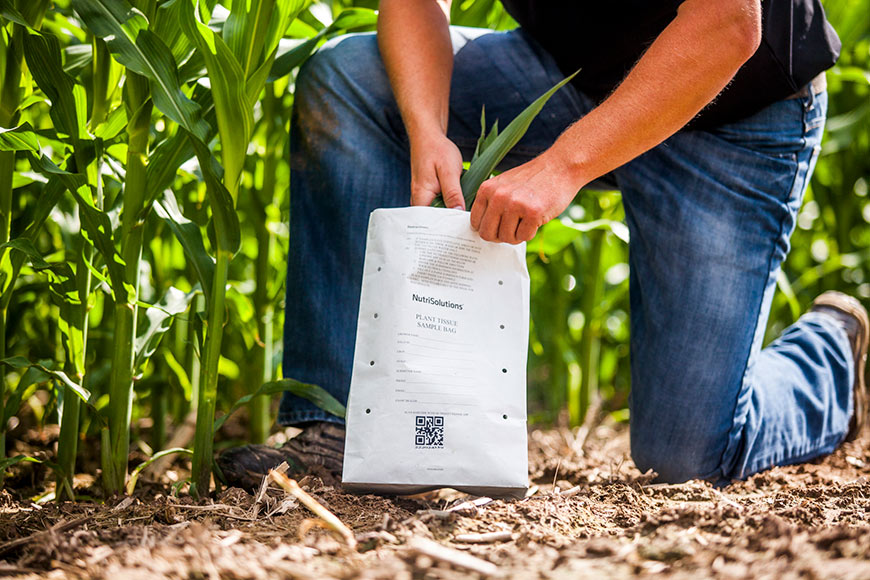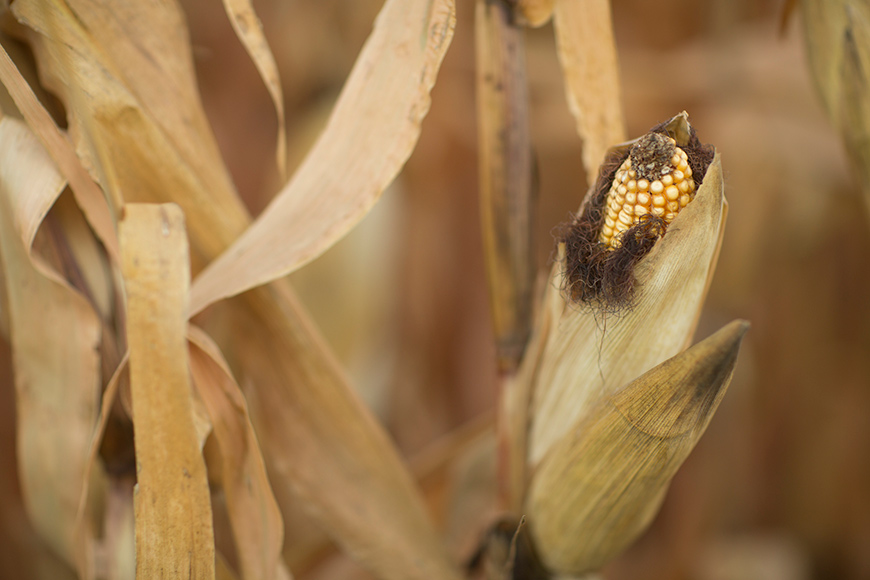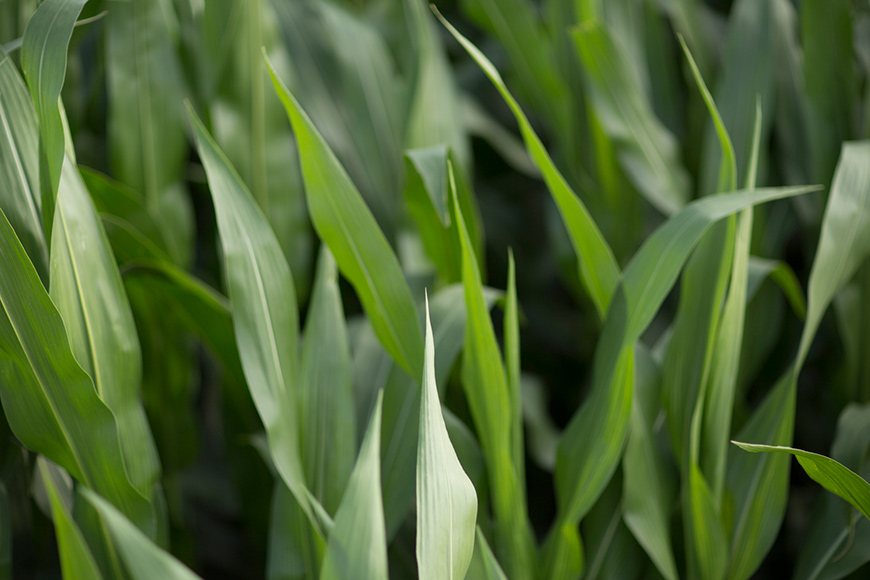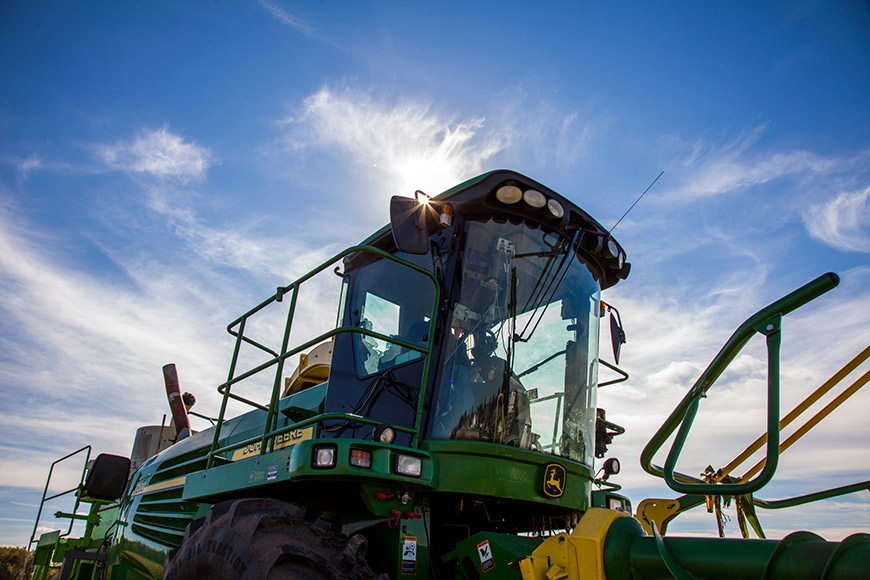Get Intentional About Tissue Sampling

Variances in weather conditions can create many challenges. If you’re not adjusting your crop nutrition decisions to account for the conditions, you could be steering your program in the wrong direction. Here’s how in-season tissue sampling and ag technology tools can help provide the information you need to make informed in-season input applications.
For example, you may find that, even though nutrients are sufficient in your soil, they may have trouble getting into the plant. There could be a number of reasons for that, so it may take some investigation and agronomic support from your advisor to identify the problem.
Ideally in corn, I recommend tissue sampling at three growth stages: V5 to V8, V10 to V15 and VT to R2. If you aren’t able to get to fields to sample this frequently, know that for in-season management, samples from one of the first two recommended stages is essential. The first two samples could influence in-season application decisions, and the VT to R2 samples are used to assess nutrient levels as plants prepare for grain fill. Sampling three times during the season gives you reference points and allows you to start observing nutrient trends in the field.
Pairing ag technology tools with tissue and soil sampling analysis can give you the reliable data you need to recalibrate your crop’s potential. Instead of making assumptions, you can more accurately predict what the most economical next step is to maximize return on investment.
Speak with your locally owned and operated WinField United retailer to learn more about the benefits of adding in-season tissue sampling and crop modeling tools to assess the impacts of excessive moisture.
1 Stewart, W. M., D. W. Dibb, A. E. Johnston, and T. J. Smyth. 2005. The Contribution of Commercial Fertilizer Nutrients to Food Production. Agron. J. 97:1-6.
This article was originally published in April 2019 and was updated in April 2021.
All photos are either the property of WinField United or used with permission.
© 2021 WinField United. Important: Before use always read and follow label instructions. Crop performance is dependent on several factors many of which are beyond the control of WinField United, including without limitation, soil type, pest pressures, agronomic practices and weather conditions. Growers are encouraged to consider data from multiple locations, over multiple years, and be mindful of how such agronomic conditions could impact results. WinField® are trademarks of WinField United.
Sometimes soil sampling isn’t enough
Don’t get me wrong: Soil sampling is an effective and absolutely necessary step to determine nutrient levels in the soil. A study in the Agronomy Journal estimates that up to 60% of yield is dependent on soil fertility.1 However, soil fertility alone doesn’t tell the whole story. Remember, your soil isn’t directly producing yield, your crops are. Understanding plant health is key to meeting crop yield potential. We know that plant health is directly connected with plant nutrition. So, in addition to soil sampling, it’s crucial to take plant tissue samples to understand how well your crop is taking up nutrients.For example, you may find that, even though nutrients are sufficient in your soil, they may have trouble getting into the plant. There could be a number of reasons for that, so it may take some investigation and agronomic support from your advisor to identify the problem.
Consider growth stage and field conditions when tissue sampling
In order to use plant tissue sampling results to make in-season fertility decisions, you need to sample at the critical growth stages for each nutrient you are testing. Crops that have received excessive rainfall or were planted into marginal soils could be more vulnerable to nutrient deficiencies due to poor root health and reduced nutrient availability. It’s critical to assess fertility levels in stressed fields and plan for in-season amendments, if needed.Ideally in corn, I recommend tissue sampling at three growth stages: V5 to V8, V10 to V15 and VT to R2. If you aren’t able to get to fields to sample this frequently, know that for in-season management, samples from one of the first two recommended stages is essential. The first two samples could influence in-season application decisions, and the VT to R2 samples are used to assess nutrient levels as plants prepare for grain fill. Sampling three times during the season gives you reference points and allows you to start observing nutrient trends in the field.
Assumptions don’t support profitable decision-making
Weather extremes can have big implications for a crop’s yield potential, but you can’t address production challenges if you don't know they exist. For example, nitrogen loss is a big concern for flooded fields. If you make assumptions about available nitrogen levels, you could be jeopardizing your profitability potential.Pairing ag technology tools with tissue and soil sampling analysis can give you the reliable data you need to recalibrate your crop’s potential. Instead of making assumptions, you can more accurately predict what the most economical next step is to maximize return on investment.
Speak with your locally owned and operated WinField United retailer to learn more about the benefits of adding in-season tissue sampling and crop modeling tools to assess the impacts of excessive moisture.
1 Stewart, W. M., D. W. Dibb, A. E. Johnston, and T. J. Smyth. 2005. The Contribution of Commercial Fertilizer Nutrients to Food Production. Agron. J. 97:1-6.
This article was originally published in April 2019 and was updated in April 2021.
All photos are either the property of WinField United or used with permission.
© 2021 WinField United. Important: Before use always read and follow label instructions. Crop performance is dependent on several factors many of which are beyond the control of WinField United, including without limitation, soil type, pest pressures, agronomic practices and weather conditions. Growers are encouraged to consider data from multiple locations, over multiple years, and be mindful of how such agronomic conditions could impact results. WinField® are trademarks of WinField United.





